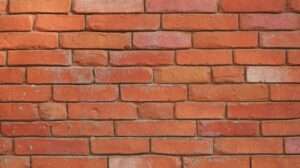Headers are an important element in Word documents as they provide a consistent and professional look to the document. However, there may be instances where you want to remove headers from your document. This could be because you want to change the formatting of your document, or you simply don’t need headers for a particular document. In this article, we will explore the process of deleting headers in Word and provide step-by-step instructions on how to do so.
Deleting headers is important because it allows you to customize your document according to your specific needs. By removing headers, you can change the formatting of your document and make it more visually appealing. Additionally, deleting headers can help streamline your document and make it easier to read and navigate. Whether you are working on a professional report or a personal project, being able to delete headers gives you more control over the appearance of your document.
Understanding the purpose of headers in Word documents
Headers in Word documents refer to the text that appears at the top of each page. They typically contain information such as the document title, author name, page numbers, and other relevant details. The purpose of headers is to provide consistency and professionalism throughout the document. They help readers easily identify the document they are reading and navigate through its pages.
Headers are particularly useful in longer documents such as reports or manuscripts, where it is important to maintain a consistent format throughout. They also serve as a visual cue for readers, allowing them to quickly locate specific pages or sections within the document. For example, if you are working on a research paper with multiple sections, having headers can help readers easily find the section they are interested in.
Step-by-step guide to removing headers in Word
To delete headers in Word, follow these step-by-step instructions:
1. Open your Word document.
2. Go to the “Insert” tab at the top of the screen.
3. Click on the “Header” button in the “Header & Footer” section.
4. Select “Remove Header” from the drop-down menu.
5. The header will be deleted from your document.
It’s important to note that deleting headers will remove them from all pages in your document. If you want to remove headers from specific pages, refer to the next section for instructions.
Using the Header & Footer Tools tab to delete headers
The Header & Footer Tools tab in Word provides additional options for managing headers and footers in your document. To delete headers using this method, follow these steps:
1. Open your Word document.
2. Double-click on the header area of the page where you want to delete the header.
3. This will activate the Header & Footer Tools tab at the top of the screen.
4. Click on the “Design” tab within the Header & Footer Tools tab.
5. In the “Navigation” section, click on the “Link to Previous” button to unlink the header from previous sections.
6. Once unlinked, you can delete the header by selecting it and pressing the “Delete” key on your keyboard.
Using the Header & Footer Tools tab gives you more control over managing headers in your document. It allows you to unlink headers from previous sections, which is useful when you want to remove headers from specific pages or sections within your document.
Removing headers from specific pages in a Word document
If you want to remove headers from specific pages in your Word document, follow these steps:
1. Open your Word document.
2. Double-click on the header area of the page where you want to remove the header.
3. This will activate the Header & Footer Tools tab at the top of the screen.
4. Click on the “Design” tab within the Header & Footer Tools tab.
5. In the “Navigation” section, click on the “Different First Page” button to remove the header from the first page.
6. To remove the header from subsequent pages, click on the “Different Odd & Even Pages” button.
By using these options, you can remove headers from specific pages or sections within your document. This is particularly useful when you want to have different formatting for the first page or when you want to remove headers from specific chapters or sections within your document.
Tips for troubleshooting header deletion issues

While deleting headers in Word is a straightforward process, there may be instances where you encounter issues. Here are some common issues and tips for troubleshooting them:
1. Header not deleting: If you are unable to delete a header, make sure that you are in the correct view mode. Headers can only be deleted in the “Print Layout” view. Switch to this view by clicking on the “View” tab at the top of the screen and selecting “Print Layout” from the options.
2. Header reappearing: If you delete a header but it keeps reappearing, it may be because the header is linked to previous sections. Use the Header & Footer Tools tab to unlink the header from previous sections before deleting it.
3. Formatting issues: Deleting headers may cause formatting issues in your document, such as text shifting or page breaks being affected. To minimize these issues, make sure to review your document after deleting headers and adjust formatting as needed.
By following these troubleshooting tips, you can overcome common issues when deleting headers in Word and ensure a smooth editing process.
Replacing headers with alternative formatting options
If you want to remove headers but still want to maintain a consistent look throughout your document, there are alternative formatting options you can use. Here are some examples:
1. Title page: Instead of using a header, create a separate title page for your document. Include all relevant information such as the document title, author name, and date on this page.
2. Footer: If you want to remove headers but still want to include some information at the top of each page, consider using a footer instead. Footers appear at the bottom of each page and can contain information such as page numbers or document title.
3. Section breaks: Instead of using headers, you can use section breaks to divide your document into different sections. Each section can have its own formatting, including different headers or no headers at all.
By exploring these alternative formatting options, you can find a solution that best suits your document’s needs while still maintaining a professional and consistent look.
Understanding the impact of header deletion on document formatting
Deleting headers in Word can have an impact on the overall formatting of your document. Here are some things to consider:
1. Text shifting: When you delete a header, the text below it may shift up to fill the space. This can affect the layout and formatting of your document, especially if you have images or tables that are positioned relative to the header.
2. Page breaks: Headers often include page numbers, which can affect the placement of page breaks in your document. When deleting headers, make sure to review your document and adjust page breaks as needed to maintain a logical flow.
3. Consistency: Deleting headers may result in inconsistencies in your document’s formatting, especially if you have multiple sections or chapters. Make sure to review your document after deleting headers and ensure that the formatting remains consistent throughout.
By being aware of these potential impacts, you can take steps to minimize any issues and maintain a professional and well-formatted document.
Best practices for managing headers in Word documents
To effectively manage headers in Word documents, consider the following best practices:
1. Plan ahead: Before adding headers to your document, think about the overall structure and formatting you want to achieve. This will help you avoid unnecessary changes or deletions later on.
2. Use section breaks: If you have different sections or chapters in your document, consider using section breaks to separate them. This will allow you to have different headers or no headers at all for each section.
3. Review formatting after deletion: After deleting headers, review your document and make any necessary adjustments to formatting, such as text shifting or page breaks. This will ensure that your document remains well-formatted and visually appealing.
4. Save a copy: Before making any major changes to your document, such as deleting headers, it’s always a good idea to save a copy of the original file. This way, you can easily revert back to the original version if needed.
By following these best practices, you can effectively manage headers in your Word documents and ensure a smooth editing process.
Streamlining your Word documents by removing headers
In conclusion, deleting headers in Word allows you to customize the formatting of your documents and make them more visually appealing. By following the step-by-step instructions provided in this article, you can easily remove headers from your documents. Additionally, by understanding the purpose of headers and their impact on document formatting, you can make informed decisions about when and how to delete headers.
Remember to review your document after deleting headers and make any necessary adjustments to maintain a consistent and professional look. By following best practices for managing headers in Word documents, you can streamline your documents and create a polished final product.
If you’re looking for a quick and easy way to delete a header in Word, check out this helpful article on GirlsGist.com. It provides step-by-step instructions on how to remove headers from your Word documents. Whether you’re a student, professional, or just someone who wants to tidy up their document, this article will guide you through the process. Don’t let headers clutter your Word files any longer – click here to learn how to delete them!
















Add Comment